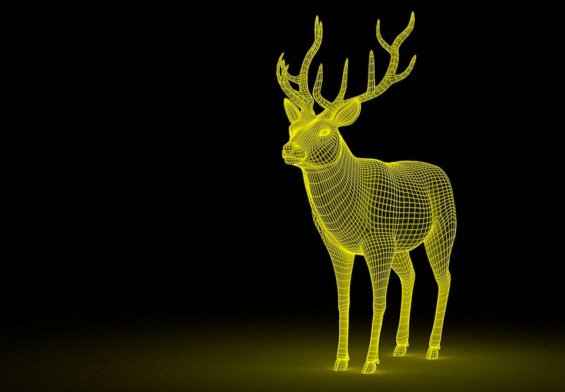AI-generated horror is changing the way we experience fear. By merging technology with primal anxieties, AI art has introduced a disturbing blend of realism and fantasy. One particular motif that stands out in AI horror is IV needles. The cold, clinical imagery associated with these medical tools evokes powerful psychological responses, making them a potent symbol in the horror genre. In this blog, we’ll explore the evolution of AI horror IV needles, how it plays on deep-seated fears, and the broader implications for art and technology.
What is AI Horror Art?
AI horror art refers to imagery generated by artificial intelligence, typically through algorithms like Generative Adversarial Networks (GANs), which create visuals that mimic human-like creativity. In the context of horror, these images often tap into primal fears by distorting familiar objects, such as medical instruments, to create unsettling scenes. By focusing on AI horror IV needles, we explore the way AI amplifies the fear of medical procedures and loss of control, themes deeply embedded in the human psyche.
Why IV Needles Evoke Fear in Horror Art
IV needles are more than just medical tools—they symbolize vulnerability, pain, and dependence. Many people have a needle phobia or at least an aversion to medical interventions, which makes needles an effective trigger for fear in art. AI art further distorts these symbols, rendering needles larger, sharper, and more menacing than they are in reality. Psychological studies show that our discomfort with medical imagery stems from our fear of bodily invasion and the unknown, making IV needles a natural fit for horror.
AI, the Uncanny Valley, and Horror
The uncanny valley is a well-known psychological phenomenon where human-like figures that are almost—but not quite—real induce feelings of unease. AI horror art, particularly when it involves medical themes like IV needles, exploits this concept. The needles may be placed in impossible or unnatural positions, merging with distorted human forms, leading to an unsettling effect. The blending of lifelike elements with the bizarre gives AI horror its unique edge.
The Psychology Behind Fear of Medical Imagery
Medical imagery in horror, especially AI-generated, often taps into universal fears. Hospitals, surgeries, and medical tools are associated with a loss of control, dependence on others, and vulnerability to pain. IV needles represent a form of bodily invasion, which triggers discomfort on both physical and psychological levels. AI horror amplifies these fears by taking familiar medical tools and distorting them to unsettling extremes, such as needles twisting like vines or merging with grotesque, surreal environments.
The Technical Side: How AI Creates Horror Art
AI uses deep learning techniques and neural networks to analyze massive datasets of images, including horror-related imagery. By training on these datasets, AI models like GANs can generate new and unique visuals based on existing patterns. The randomness and unpredictability of AI-generated imagery mean that something as simple as an IV needle can be warped into disturbing forms, heightening the fear response in viewers.
For instance, AI can create images where needles pierce through skin in impossible ways, or where medical equipment appears sentient, adding layers of horror. These distortions not only engage the viewer’s fear of pain and medical interventions but also force them to confront deeper anxieties about technology’s role in shaping human experiences.
AI Horror IV Needles and the Unsettling Power of Visuals
One of the most compelling aspects of AI horror IV needles is the way it manipulates the familiar. Needles, typically symbols of care and healing, are transformed into tools of terror. In AI-generated art, they may be shown emerging from bodies in grotesque ways or suspended in eerie, sterile environments, evoking both fascination and discomfort.
These images also play into the fear of the unknown—we fear not only the needle itself but what it represents. The cold, clinical precision of the IV needle contrasts sharply with the organic, unpredictable nature of the human body, creating a sense of unease that lingers long after the image has faded.
Ethical Considerations in AI Horror Art
While AI horror offers a fascinating exploration of fear, it also raises ethical concerns. Some argue that using phobias, such as fear of needles, in AI-generated horror could be seen as exploitative. As AI art becomes more prevalent, creators must consider the psychological impact of these images on vulnerable viewers. Moreover, there’s the potential risk of desensitization, where repeated exposure to disturbing content numbs emotional responses.
The Future of AI Horror: A New Dimension of Fear
As AI continues to advance, we can expect even more complex and disturbing horror imagery. Virtual Reality (VR)and Augmented Reality (AR) technologies may soon merge with AI-generated horror, creating fully immersive experiences where viewers interact with the terror. Imagine navigating a virtual world where AI horror IV needlescome to life, piercing the boundaries of both physical and psychological fear.
These advancements suggest that AI horror will not only push the limits of art but also force us to confront our deepest anxieties in ways we never thought possible.
Conclusion
AI horror art, particularly featuring IV needles, pushes psychological fear to new heights by distorting familiar medical imagery. This combination of realism and surreal horror evokes vulnerability and loss of control, tapping into deep-seated anxieties. As AI continues to evolve, it opens new possibilities for immersive and personalized horror, while also raising ethical concerns about exploiting real-world fears. The future of horror promises to be both terrifying and fascinating as AI continues to reshape the genre.





